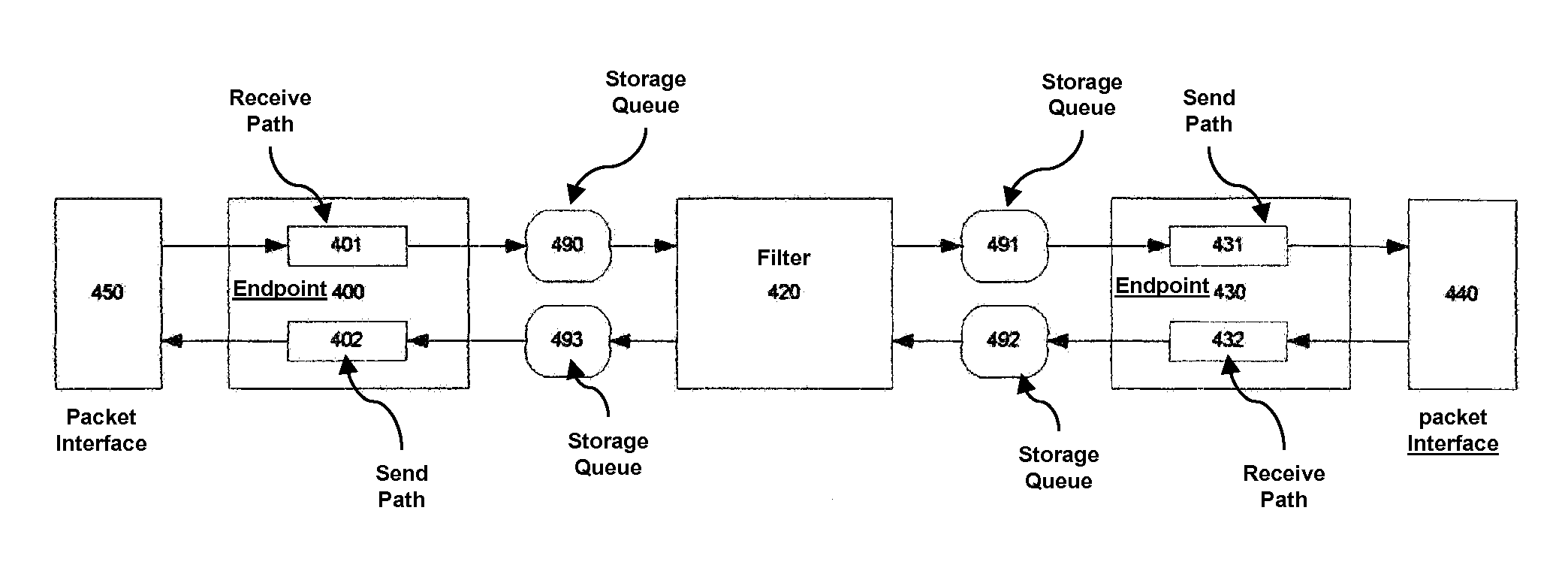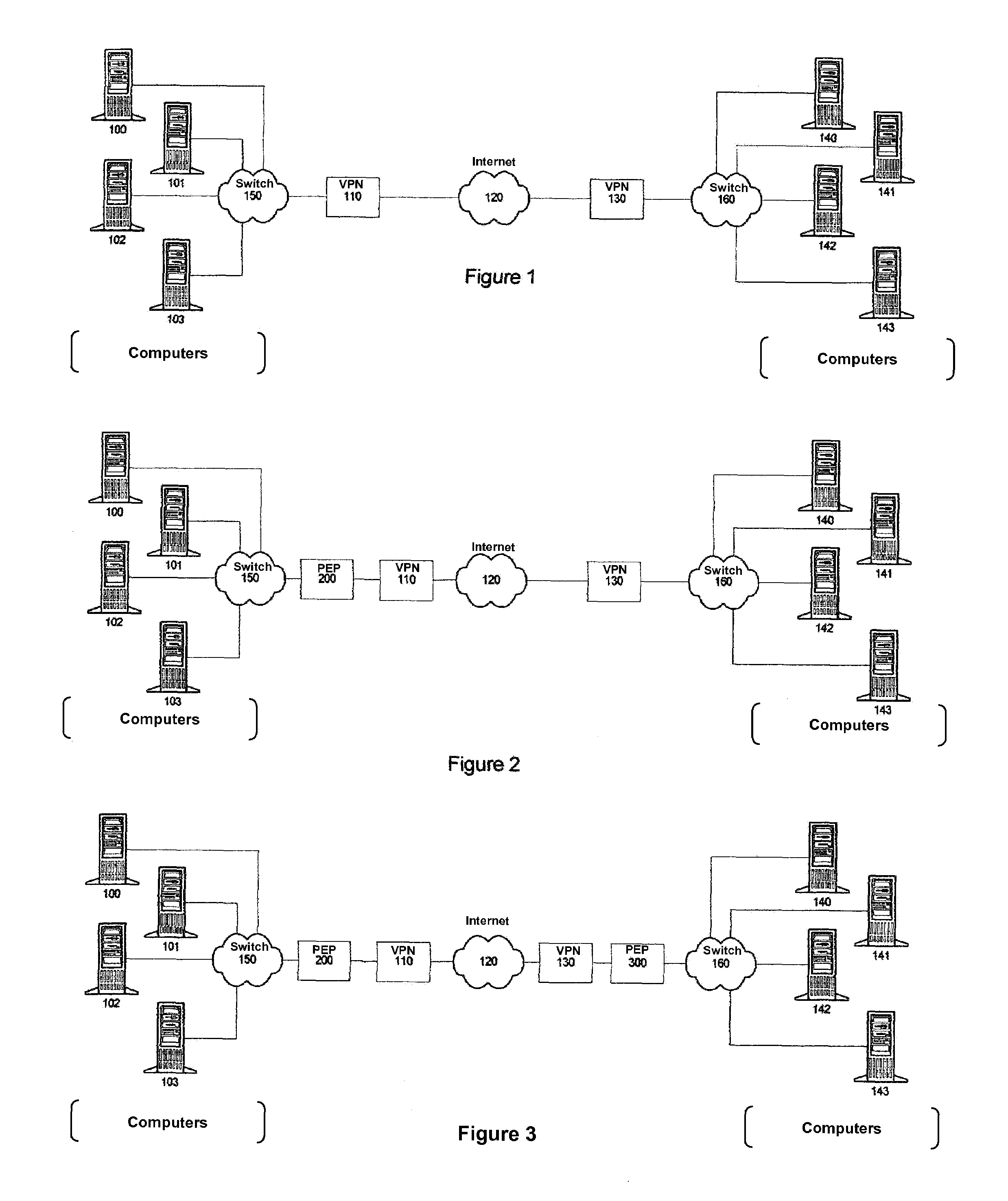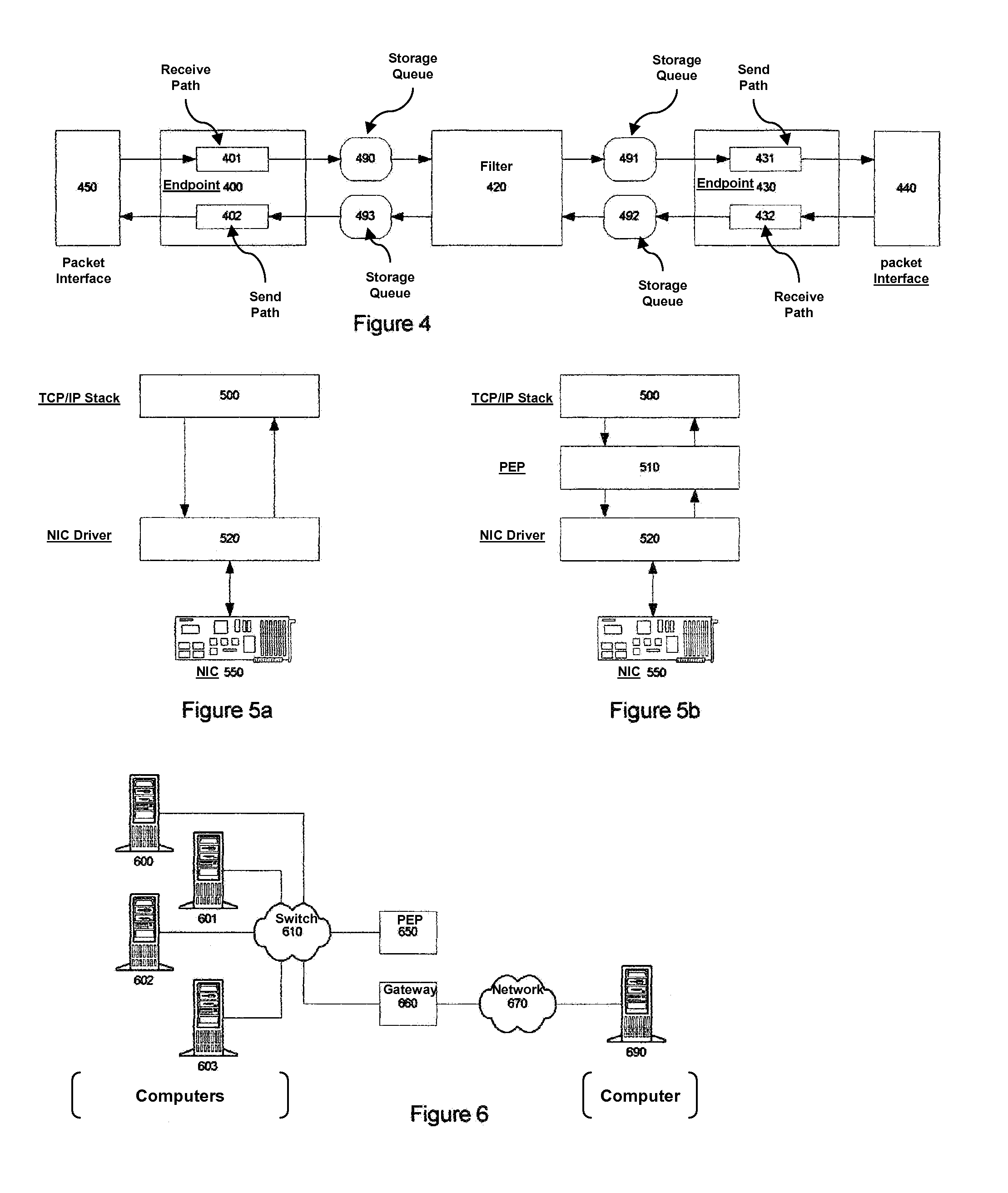Method of determining path maximum transmission unit
a transmission unit and path technology, applied in the field of computer network processing, can solve the problems of best-effort, unreliable, and unreliable network protocols, and limiting the maximum tcp performance accordingly
- Summary
- Abstract
- Description
- Claims
- Application Information
AI Technical Summary
Benefits of technology
Problems solved by technology
Method used
Image
Examples
embodiment
Preferred Embodiment
[0115]FIG. 4 shows the architecture of a preferred embodiment of a PEP. The depicted PEP is symmetrical, in that data can flow in either direction. For a first direction of data flow, packet interface 450 receives packets from a network and forwards them to endpoint 400. Endpoint 400, operating as described below, contains receive path 401, which delivers data to storage queue 490. Filter 420 removes data from storage queue 490 and processes it as described below. Filter results destined for the same data flow direction are placed into storage queue 491. Endpoint 430, containing send path 431, removes data from storage queue 491, packetizing it for delivery to a network via network interface 440.
[0116]Note that storage queue 490 may be required only for certain implementations of filter 420. Some implementations of filter 420 may not require retaining inbound data, in which case, the storage queue is unnecessary. Other implementations of filter 420 may provide st...
PUM
 Login to View More
Login to View More Abstract
Description
Claims
Application Information
 Login to View More
Login to View More - R&D
- Intellectual Property
- Life Sciences
- Materials
- Tech Scout
- Unparalleled Data Quality
- Higher Quality Content
- 60% Fewer Hallucinations
Browse by: Latest US Patents, China's latest patents, Technical Efficacy Thesaurus, Application Domain, Technology Topic, Popular Technical Reports.
© 2025 PatSnap. All rights reserved.Legal|Privacy policy|Modern Slavery Act Transparency Statement|Sitemap|About US| Contact US: help@patsnap.com



